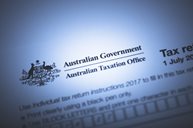EOFY Tips to Maximise Tax Refund in 2025
With just a few weeks to go until the end of the tax year, you might think it’s too late to knock your taxes for the year into shape. However, even this close to the end of financial year (EOFY), there are still some last minute planning opportunities to maximise your refund for the year. So, what should you be doing as we head towards June 30?
If so, look to utilise the “instant asset write-off” measure. Provided your business has a turnover of less than $10 million, this allows you to claim an immediate tax deduction for all capital purchases costing less than $20,000, rather than depreciating the cost over several years, as used to happen.
This is great for tech items such as computers, tablets and phones, as well as tools and equipment for tradies, office furniture and even motor vehicles (though any cars will probably need to be second hand, given the $20,000 limit!).
Remember, as well as making a purchase, the asset you acquire also must be used or available for use in your business, so realistically you need to get the item delivered and installed by 11:59PM on 30 June 2025, to be able to claim the deduction in the 2025 year. If you order something now for delivery and/or installation in July, you won’t be able to claim the deduction this tax year.
If you are employed but work from home, either occasionally or all the time, you are entitled to deductions for costs arising from working at home. The expenses that you can claim include:
Alternatively, you can claim the ATO’s concessional 70 cents per hour fixed rate to include several working from home deductions in one simple, easy-to-use amount. The rate includes the additional running expenses you incur for:
The fixed rate does not include deductions for the work-related use of technology and office furniture such as chairs, desks, computers, bookshelves or repairs to these items. Cleaning costs are also excluded. These costs can be claimed separately, so remember to keep those receipts!
If you use the log-book method, now is the time to check that your log-book is up to date and that you have all the receipts, invoices and records of journeys which you will need to calculate and substantiate your claim.
If you use the cents per kilometre method, you will still need a record of all work-related journeys during the year.
If you used your personal mobile phone for work purposes, you could claim a deduction for the business-related use. Make sure you have your phone bills compiled and have kept a log of your business/personal use over a four-week period. That percentage can then be applied to the whole year.
It’s important to remember, you can’t claim a separate deduction for mobile phones if you have claimed the 70 cent/hour fixed rate for working from home.
Make a last minute charitable donation. You can claim a deduction for donations of more than $2 to a registered charity provided you have a receipt for the donation.
You can claim a tax deduction this year for expenses which wholly or partly relate to next year. So, if you have some spare cash, consider paying things like union fees, professional subscriptions and annual insurance premiums in advance in order to accelerate the deduction.
Make sure you have written evidence, such as receipts, invoices and bank or credit card statements, for everything you intend to claim.
If you have some spare cash, look at making a personal contribution into your super fund. Provided the total amount of your contributions (including the contributions made on your behalf by your employer) does not exceed $30,000, this can be a great way to boost your retirement savings and claim a tax deduction for the personal contribution. The payment must be made and processed by your super fund by June 30th and you need to advise your super fund that you will be claiming a tax deduction for the contribution by the time you lodge your tax return (your super fund or accountant can give you guidance on how to complete the form and there’s a standard form on the ATO website here. Most super funds recommend making the payment at least 1 week before the end of the financial year, to ensure it is processed in time.
If you’ve disposed of shares or any other form of investment and you know you’ve made a capital gain, take a look at your investment portfolio and consider disposing of any assets which you know are sitting at a loss. The resulting capital losses can be offset against the capital gain.
Be careful though if you sell shares sitting at a loss and then buy them back in the new tax year. The ATO takes a hard line against so-called “wash sales”. This refers to the sale of an asset before the year end and the purchase of a substantially identical asset immediately after the year end. The ATO regard the purchase and the sale as effectively the same asset and have issued a Tax Ruling which states that they can apply the anti-avoidance provisions to cancel any tax benefits and apply penalties.
Speak to a tax agent like H&R Block. They can identify exactly what you need to do to get into shape for the 2025 tax season and maximise your deductions.
Updated May 2025
1. Running your own business?
If so, look to utilise the “instant asset write-off” measure. Provided your business has a turnover of less than $10 million, this allows you to claim an immediate tax deduction for all capital purchases costing less than $20,000, rather than depreciating the cost over several years, as used to happen.This is great for tech items such as computers, tablets and phones, as well as tools and equipment for tradies, office furniture and even motor vehicles (though any cars will probably need to be second hand, given the $20,000 limit!).
Remember, as well as making a purchase, the asset you acquire also must be used or available for use in your business, so realistically you need to get the item delivered and installed by 11:59PM on 30 June 2025, to be able to claim the deduction in the 2025 year. If you order something now for delivery and/or installation in July, you won’t be able to claim the deduction this tax year.
2. Home Office
If you are employed but work from home, either occasionally or all the time, you are entitled to deductions for costs arising from working at home. The expenses that you can claim include:
- Heating, cooling and lighting
- Cleaning costs
- Decline in value (depreciation) of home office furniture and fittings, office equipment and computers (for items over $300)
- Computer consumables, stationery, telephone and internet costs
- Items of capital equipment (such as furniture, computers and associated hardware and software) which cost less than $300 can be written off in full immediately
Alternatively, you can claim the ATO’s concessional 70 cents per hour fixed rate to include several working from home deductions in one simple, easy-to-use amount. The rate includes the additional running expenses you incur for:
- home and mobile internet or data expenses
- mobile and home phone usage expenses
- electricity and gas (energy expenses) for heating, cooling and lighting
- stationery and computer consumables, such as printer ink and paper.
The fixed rate does not include deductions for the work-related use of technology and office furniture such as chairs, desks, computers, bookshelves or repairs to these items. Cleaning costs are also excluded. These costs can be claimed separately, so remember to keep those receipts!
3. Car expenses
If you use the log-book method, now is the time to check that your log-book is up to date and that you have all the receipts, invoices and records of journeys which you will need to calculate and substantiate your claim. If you use the cents per kilometre method, you will still need a record of all work-related journeys during the year.
4. Mobile Phone
If you used your personal mobile phone for work purposes, you could claim a deduction for the business-related use. Make sure you have your phone bills compiled and have kept a log of your business/personal use over a four-week period. That percentage can then be applied to the whole year. It’s important to remember, you can’t claim a separate deduction for mobile phones if you have claimed the 70 cent/hour fixed rate for working from home.
5. Charitable donations
Make a last minute charitable donation. You can claim a deduction for donations of more than $2 to a registered charity provided you have a receipt for the donation.
6. Prepay some expenses
You can claim a tax deduction this year for expenses which wholly or partly relate to next year. So, if you have some spare cash, consider paying things like union fees, professional subscriptions and annual insurance premiums in advance in order to accelerate the deduction.
7. Gather written evidence
Make sure you have written evidence, such as receipts, invoices and bank or credit card statements, for everything you intend to claim.
8. Make a tax deductible super contribution
If you have some spare cash, look at making a personal contribution into your super fund. Provided the total amount of your contributions (including the contributions made on your behalf by your employer) does not exceed $30,000, this can be a great way to boost your retirement savings and claim a tax deduction for the personal contribution. The payment must be made and processed by your super fund by June 30th and you need to advise your super fund that you will be claiming a tax deduction for the contribution by the time you lodge your tax return (your super fund or accountant can give you guidance on how to complete the form and there’s a standard form on the ATO website here. Most super funds recommend making the payment at least 1 week before the end of the financial year, to ensure it is processed in time.
9. Offset capital gains against capital losses
If you’ve disposed of shares or any other form of investment and you know you’ve made a capital gain, take a look at your investment portfolio and consider disposing of any assets which you know are sitting at a loss. The resulting capital losses can be offset against the capital gain. Be careful though if you sell shares sitting at a loss and then buy them back in the new tax year. The ATO takes a hard line against so-called “wash sales”. This refers to the sale of an asset before the year end and the purchase of a substantially identical asset immediately after the year end. The ATO regard the purchase and the sale as effectively the same asset and have issued a Tax Ruling which states that they can apply the anti-avoidance provisions to cancel any tax benefits and apply penalties.
10. Seek expert help
Speak to a tax agent like H&R Block. They can identify exactly what you need to do to get into shape for the 2025 tax season and maximise your deductions.Updated May 2025

Still have questions?
We have the answers. Let us take care of you and your tax needs.
Tax News
Individual Tax
Business Tax
Tax Tips
Tax Return
Income Tax
Investment
Employees
How-to
Tax Laws
Tax Deductions
Share with your friends
Related Articles
Poppy Lissiman launched her brand at 19 and quickly learned the value of getting the right tax su...
2.5 min read
By being responsible and staying on top of the tax return deadlines, you can make your annual tax...
4 min read
Every year, the ATO looks closely at tax claims which relate to holiday homes to ensure that peop...
5 min read
Depending on what you do for a living, that can give rise to some unexpected deductions!
10 min read




.png?width=55&height=48&ext=.png)
-1.svg)

